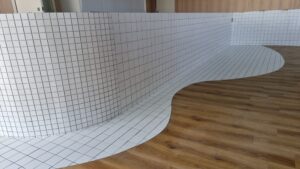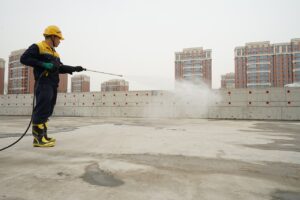Proper sealing and waterproofing are critical in wet areas like showers and bathrooms to prevent water damage and mold growth. Here are some steps to ensure that tiles are properly sealed and waterproofed in wet areas:

1. Choose the right type of tile: Some types of tile, such as porcelain or natural stone, are more water-resistant than others. It’s important to choose a tile that is suitable for use in wet areas.

2. Prepare the surface: The surface must be clean, dry, and free of any contaminants before tile installation. Any cracks or gaps in the substrate should be repaired.
3. Use waterproofing products: A waterproofing membrane should be applied to the substrate before tile installation. This membrane can be in the form of a liquid, sheet, or fabric. The membrane should be applied to the entire surface, including the walls and the floor of the shower or bathroom.
4. Seal the edges: The edges of the tiles and the joints between them should be sealed with a waterproof sealant. This will prevent water from penetrating through the gaps between the tiles.
5. Install a sloped floor: The floor of the shower or bathroom should be sloped towards the drain to ensure proper drainage.
6. Test the waterproofing: Before installing the tiles, it’s a good idea to test the waterproofing by filling the shower or bathroom with water and checking for any leaks.
7. Maintain the waterproofing: Proper maintenance, such as regular cleaning and resealing of the grout and sealant, can help ensure the longevity of the waterproofing.
It’s important to hire a professional installer who has experience with waterproofing and tile installation in wet areas to ensure a proper and effective installation.
